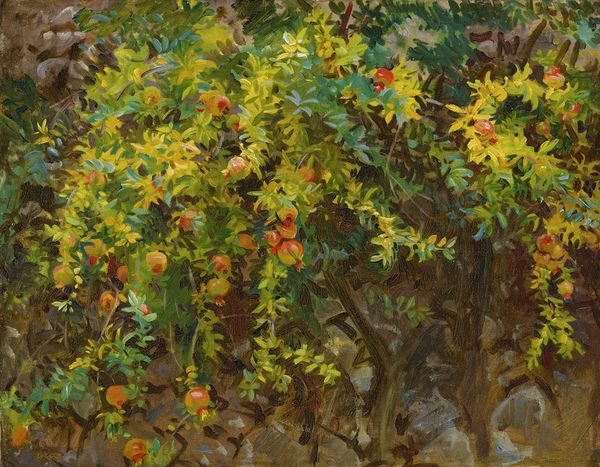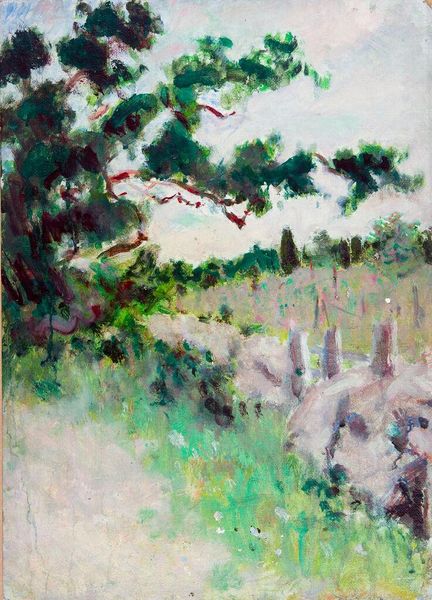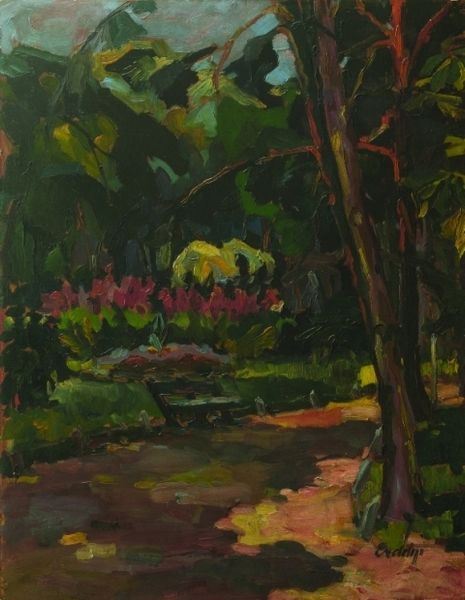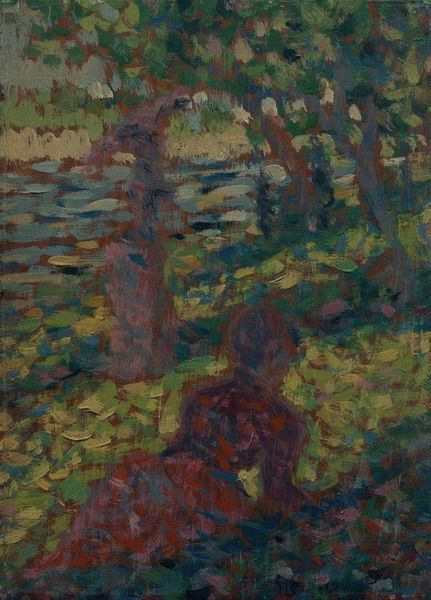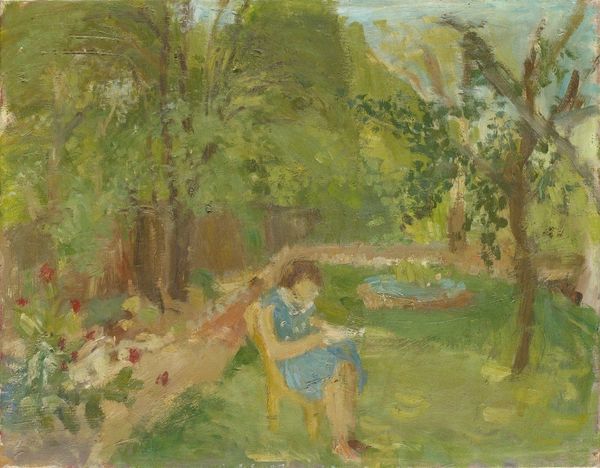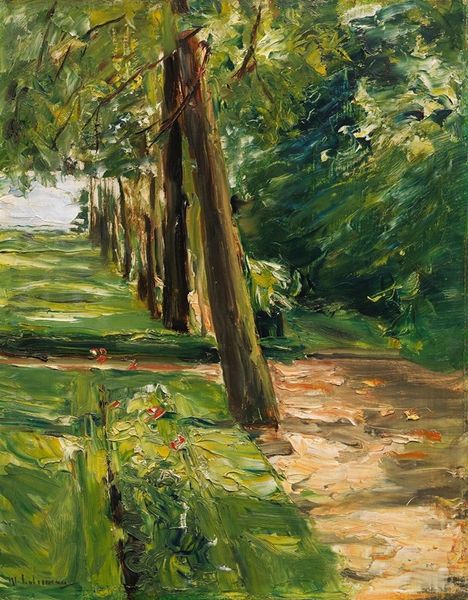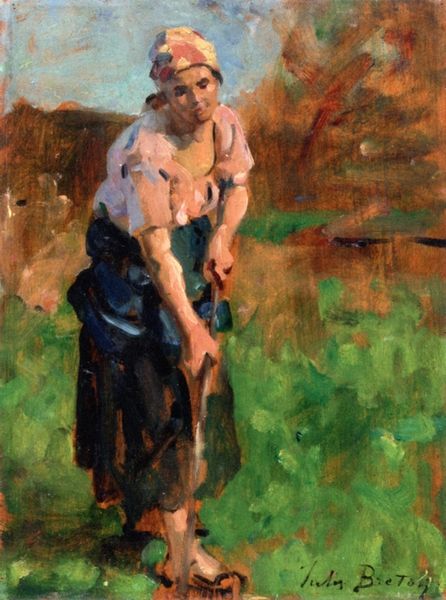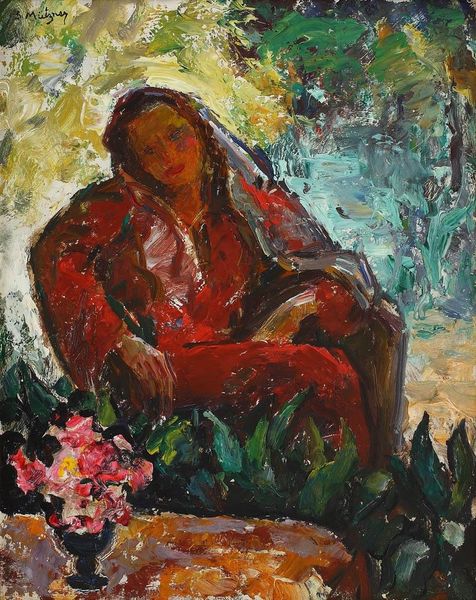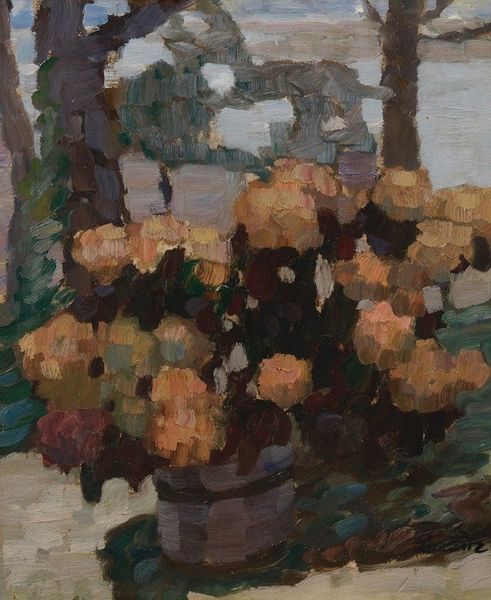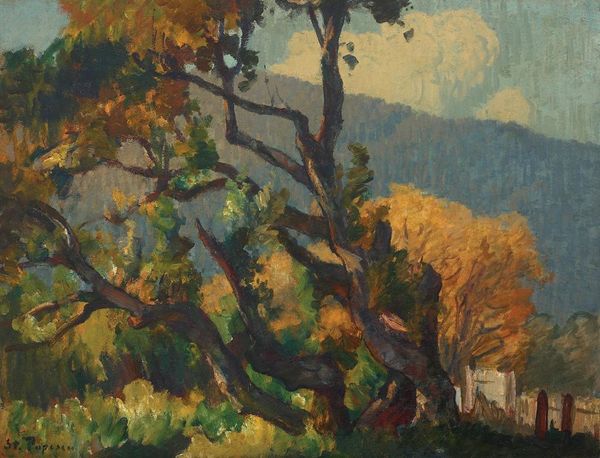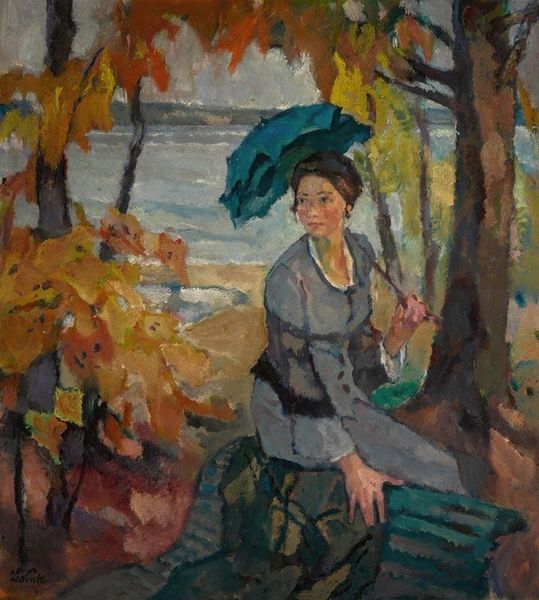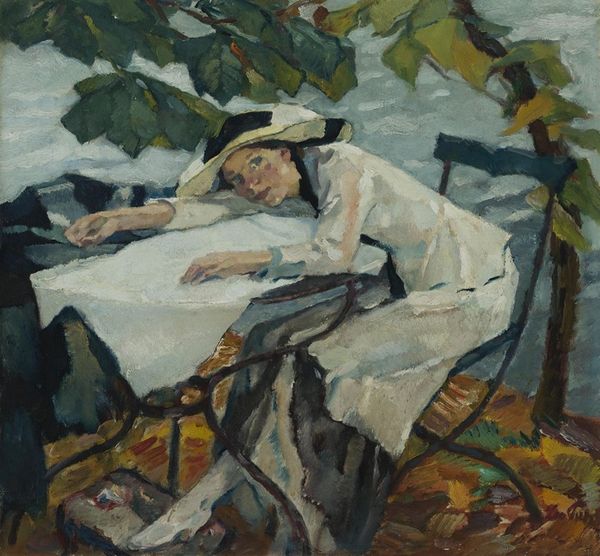
Copyright: Public Domain: Artvee
Editor: Here we have Leo Putz’s “Toni im Blumenbeet,” painted in 1924. It's oil on canvas, and I'm immediately struck by how the figure seems almost engulfed by the vibrant, almost chaotic garden. What do you see in this piece? Curator: Well, considering Putz's position in the art world of his time, it's fascinating to see how he both embraced and departed from prevailing trends. The impressionistic brushstrokes are clear, but there's also a raw, almost modern sensibility in how he portrays the figure's relationship with nature. It feels deliberately anti-establishment in its composition. The "Blumenbeet," the flower bed, becomes less a serene backdrop and more of an immersive environment. Where does the garden end, and Toni begin? Editor: That's interesting. I hadn't really considered the historical context so much as the pure visual impact. Do you think that immersion suggests something about the role of women at the time, maybe within domestic spaces? Curator: That’s certainly a valid interpretation. Think about the prevailing social expectations of women and their connection to nature. But perhaps Putz is critiquing that very notion, depicting it as overwhelming. Is Toni a figure of liberation, or is she consumed by expectations? Furthermore, it challenges the traditional gaze, placing the woman in a more active, almost confronting, position within the composition. Editor: So it's not just a pretty picture; it’s loaded with social commentary? Curator: Absolutely! Consider how exhibition spaces like museums and salons played a huge part in validating certain narratives and silencing others. By painting this, Putz subtly engaged in a dialogue – and possibly a debate – with the artistic status quo. The institutional acceptance, or rejection, of this piece speaks volumes about the era's values. Editor: I never thought about the gallery being part of the message! Thanks, that gives me so much to think about. Curator: My pleasure. It’s all about considering the conversation the artist is having with their society through their work and through its showing--or not showing.
Comments
No comments
Be the first to comment and join the conversation on the ultimate creative platform.
